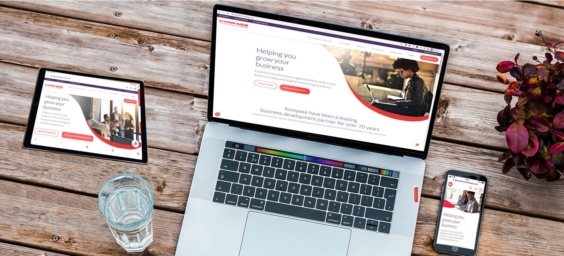23 October 2019
Direct Mail is making a comeback – gathering postal data still has real value
Is promotional direct mail dead? The numbers seem to suggest so.
UK total inland letter volumes declined by 3.1% p.a. from 2005 to 2008, and by 6.3% p.a. from 2008 to 2013, as the economic downturn increased the rate of decline. The next five years’ worth of data are expected to continue the trend, with the exception of parcel, delivering products bought and sold… primarily via online communication. Yes, email and electronic media are no doubt the main development drivers in the marketing mix now and are big catalysts for this seemingly terminal decline. If one turns back the clock just over 10 years, direct mail was one of the largest single forms of B2B promotion and the major vehicle in the third sector, with most B2C companies using it too, depending on their offer.
However, studies have shown a variety of businesses are still reaping great rewards from a targeted letter. In fact deeper inspection shows that direct mail is STILL the 3rd single largest channel used by marketers in the UK (Europe’s largest single nation for marketing spend).
So how could (and why should) marketers reacquaint themselves with the medium?
Direct Mail is a great way to fully utilise your data in a targeted manner. If you have a database that gathers anything more than the basic postal fundamentals, then it can be easy; in the midst of your regular social media activity and writing blogs to attract new customers and improve SEO; to forget what rich information about your prospects and customers you have.
With a postcode you have the power to unlock a wealth of critical demographic information about your customers that you simply can’t do in a personal manner via Google ads or broadcast media.
By running a set of your postcodes through a software analytical tool like ACORN or Mosaic you can now not only get information of characteristics of a certain area or postal district, but right down to household itself, all for just around £1,000 entry fee.
The insight you can gain includes:
· Income
· Purchasing Habits
· Family Demographics
· Social Class
· Profession
· And much more
By modelling your customer’s whereabouts you can target similar households who you can then send targeted door delivery, adapted to their anticipated needs and wants.
For B2B, the data you may collect includes the things one might expect, such as a job title, industry etc. With B2B response rates generally higher, that means a well addressed letter to a senior player in a business is less likely to be read and passed on.
The older generation loves a letter and they may not be alone:
It can be easy to get carried away on the digital marketing superhighway. Rich media is creating some sensational new ways to delight and persuade consumers to either buy or interact with companies.
However, when we get down to basic human instincts there is a generation of buyers who simply love a letter. The effort and symbolism of something you physically hold in your hand is going to be a hard act to beat. Especially for Generation X and Baby Boomers born pre 1990 (who account for well over 50% of the UK population) and have wealth and influence.
Here’s a relevant example;
One company keen to complement its online activities with a strong offline presence is adult-only hotel chain Warner Leisure Hotels.
Head of marketing Marc Caulfield says physical marketing remains important because most of its customers are over 55, although many also interact with the brand on digital devices.
“Their behaviour is firmly rooted in the physical world with 85% of all holidays booked on the phone or at one of our 13 hotels, and just 15% on the Warner website” he says. “Digital performance goes from strength to strength with ongoing optimisation, but door drops have seen a year-on-year improvement in performance of 39% and direct mail by 35%”.
For every £1 spent on door drops, Warner Leisure Hotels generates about £3.49 in bookings.
A similar phenomenon occurs in the property sector, where door mailings are used to generate over 10% response rates due to the emotional response to direct mail, read more from marketing week here.
“There is so much talk of social media, email marketing, Google AdWords, Twitter and Facebook campaigns not to mention telesales. However, we are talking about homeowners making a decision about how best to sell what is usually their most valuable asset and one to which there is often a strong emotional attachment. In these circumstances old-fashioned physical mail has proved to be the most effective method”, says Managing Director Justin Jordan.
Personalisation is still key
As well as the targeting power and the emotional and physical presence of a letter it’s truly a direct appeal. How individually crafted does an email or tweet truly feel, in its very format? Digital is fantastic, but to many older consumers it is ‘of the ether’, i.e. not really there. Experiments for example with hand written letter with stamps used, as opposed to the ‘junk mail’ signifying franking mark, have shown as much as a doubling of response rates, because it looks and feels like an effort has been made for the recipient.
Longevity
Recent research suggests the average eye is bombarded with over 5,000 marketing messages in a single day. Most of this is due to the advertising we are used to, from broadcast above the line media. The rapidly growing ‘eye candy’ promos, of ‘phone and online is where the spend growth is to be found here. The major social media platforms have made great strides in meeting their environment to allow relatively well served advertising insertions into their very popular content. Let’s take Facebook as a standout of example.
Everyone from sole trader businesses to global multinationals can boost their posts or place advertising in newsreels. It provides great reach at a very low cost. It also enables good targeting. But, unless it’s done very, very well, one could argue it isn’t really personalised at all; and certainly not in the same way as a letter or invitation.
When a receipt becomes exciting reading…
We’ve covered the merits of personalisation in print already. So let’s skip to another weakness of digital ads and email for that matter.
It’s very transitory. How many times have you found yourself scanning madly up and down on a news feed on Facebook, bewildered by where an interesting piece of promotional content is? It can seem like catching the White Rabbit. On LinkedIn and Twitter, your likes and shares are indexed for you, but in Facebook, once you tick the thumbs up it’s over to the advertiser with your data. It’s common for email responses to die down less than 24 hours after sending. Of course emails do technically stand a chance of a longer shelf life if the delete button isn’t employed. But most anecdotal evidence shows that customer order receipts are the emails people most refer back to, not sales messages.
In contrast something printed and of value can reside with the recipient and gets referred to for a great deal longer. For organisations with anything more than a few products to present, a brochure is the obvious way to stay in customer’s minds. Think this is expensive and old fashioned marketing? Not according to fashion market leader NEXT. Last year the retail giant announced a major return to its direct mail business, which was cited as a significant factor in a revitalised overall sales performance. The famed NEXT directory was physically mailed out highlighting the changes to product lines every six weeks, rather than just seasonally. “We have turned it back on.” Declared boss Lord Wolfson.
Of course not everyone had NEXT’s budget but with powerful use of creative even the thinnest budget can go far; especially in the digital print era with very low set up costs.
All kinds of engaging print styles are possible. A common technique that boutique hotels use is to send a postcard from a picturesque setting to former guests, inserting the name of the recipient, for a ‘wish you were here’ appeal, that could be pinned on a fridge for months.
Handwriting style font is also a very useful device to make people open letters, direct mail machines can be programmed to use your data and translate it into a cleverly randomised ‘pen’ written look. Add some nice paper and straight away you have an item that has more value and earns longer attention span.
The response driver – DM works!
Current acceptable digital banner click rates hover around the 0.1% rate for display. Of course this medium may be performing a number of functions, most specifically awareness creation. But, even allowing for wild variations on product and sector, a response generating letter or leaflet, is executed properly in a B2B market, should be registering a 2 or 2.5% response rate. So, assuming the same investment, your banner add will take at least 20 times as long to bear the same fruit; that is not even taking into account the time cost one has to factor in to manage rapidly fluctuating online advertising markets, with bidding and the vast array of serving options. One of the reasons this is not declining is that the very reduction in volume of direct mail is making ‘space’ and creating a certain ‘novelty value’ of postal marketing, a factor directly cited by NEXT.
Keep it in the mix
Think about it. If you’ve digitised most of your communications, not only are you at the mercy of overloaded customers and spam filters, but does it feel right that the only written communication they may get is an invoice? This is a pet hate of many more traditional consumers. Here are a few relatively low cost ways of keeping your customer informed via his or her letterbox:
· Monthly newsletter
· Seasonal catalogue
· Reward scheme tokens
· Xmas card
· Satisfaction survey
· Data update/permissions mailing
Of course rising post prices may make large volume mailings of multiple items out of the reach of some budgets. However, many of these types of mailings lend themselves to relatively tight, phased mailings aimed at particular sets of prospects or customers.
For high value items, the pull of a truly ‘glossy’ brochure is still strong. Agencies marketing to the wealthy have seen very little drop off in reaction to the luxury feel of a beautiful booklet.
What now?
Rediscovering the power of data and its direct mail application isn’t hard. Here are just a few steps you may want to take on the way;
1. Undertake a data audit
· Make sure your data fields are consistent with things like salutations and of course that you collect postcode and building number wherever you can
2. Find a decent digital mailing house
· One that has clever software that can execute digital print and personalise mailings. Preferably all under one roof. Try the Direct Marketing Association – most leading suppliers will be members
3. Engage a creative with a record of delivering results
· The more DM becomes specialist, the harder the key skills are to find and higher the risks of spending money on agencies who can’t take you through the whole process. The pioneers in sophisticated, dynamic direct marketing are arguably Lorien Unique, but there are good online directories to help you source a supplier to fit your needs and budget.
4. Brainstorm how your products of services could benefit from a clever campaign
Author: John Fenna Head of Marketing, Communications & Digital at Tavistock Relationships
Disclaimer: Please note that this blog only contains general information and insights about legal matters. The information is not advice, and should not be treated as such. Kompass.com










Comentarios
No Comments